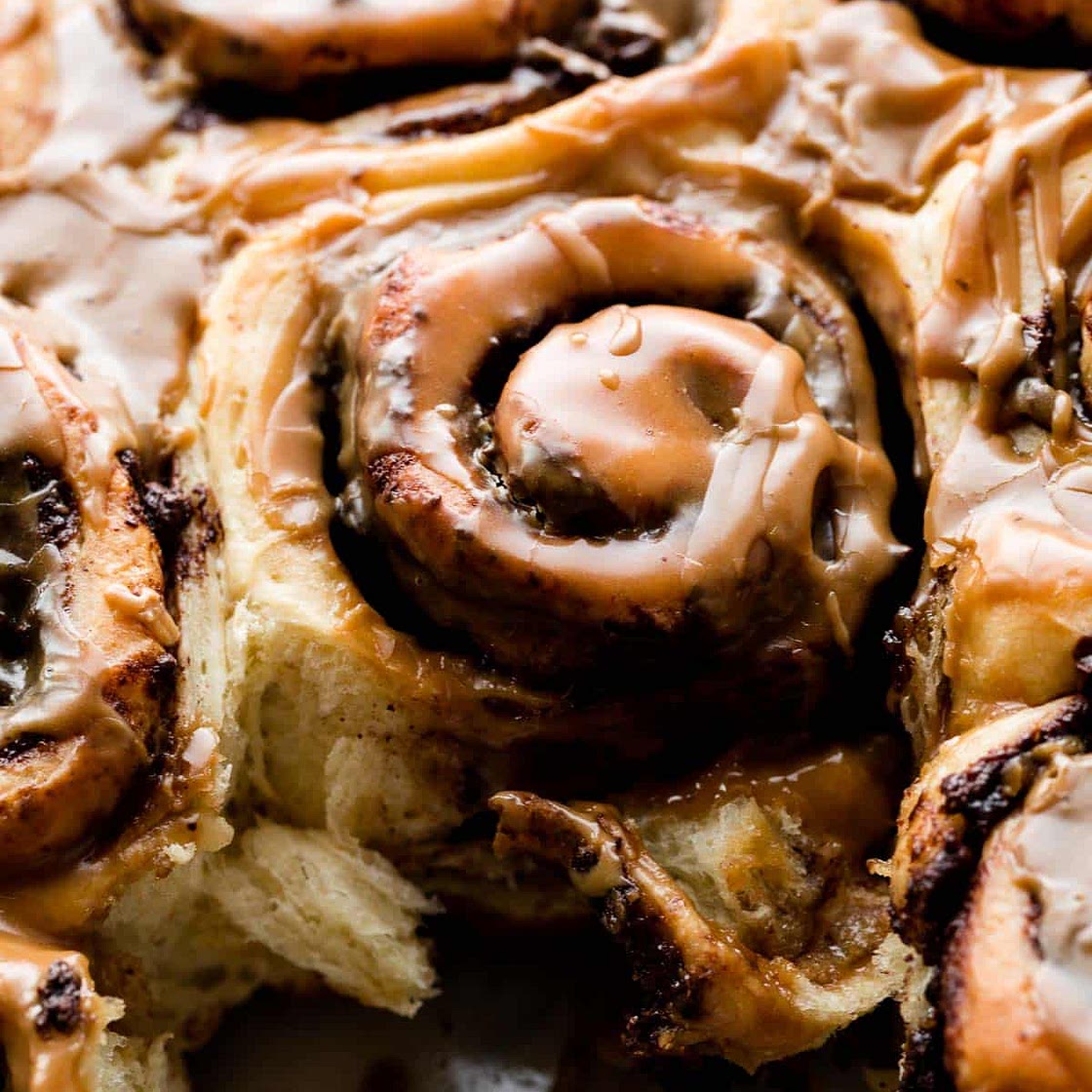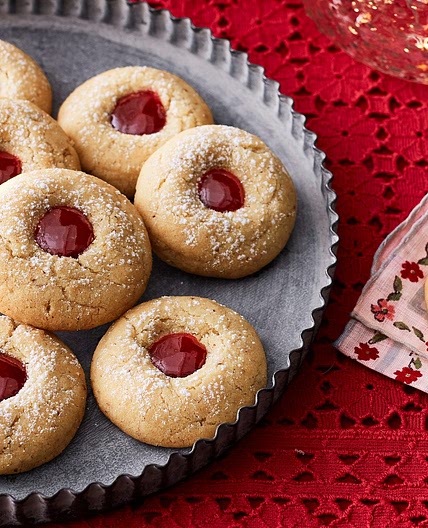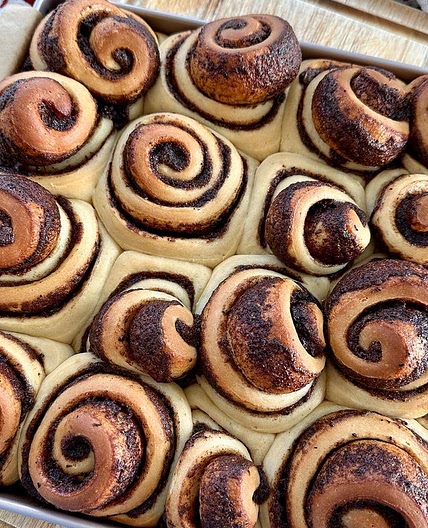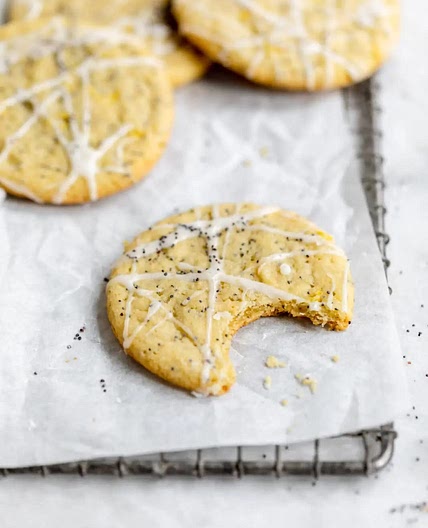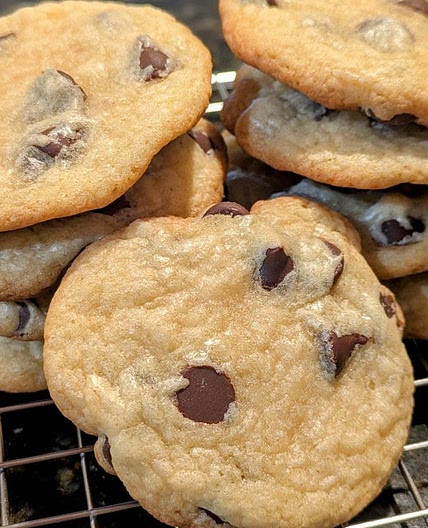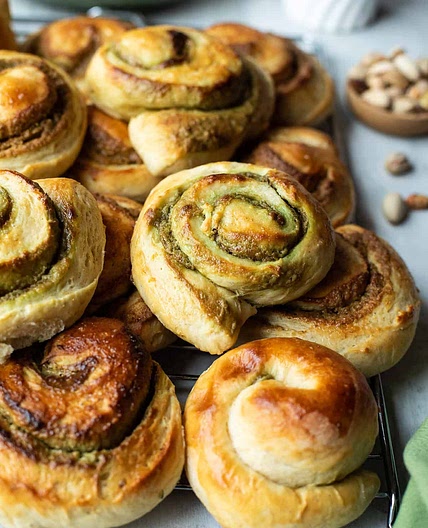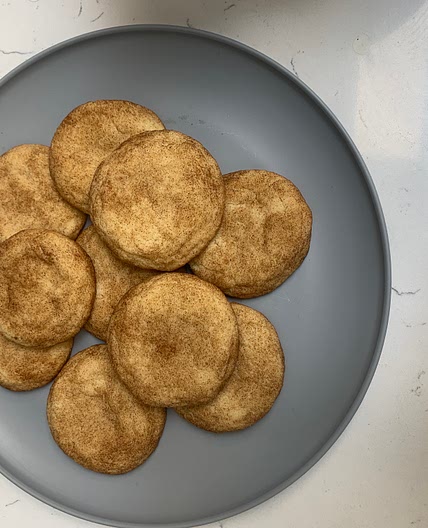By Andy Smith
Rich and Fluffy Chocolate Rweet Rolls
These rich and fluffy chocolate sweet rolls come together with a buttery soft fresh homemade dough and brown sugar chocolate filling. They’re shaped like cinnamon rolls, but taste like flaky chocolate babka. You can make the chocolate rolls within a few hours or get started the night before using the overnight preparation option.
Updated at: Thu, 08 Feb 2024 15:07:37 GMT
Nutrition balance score
Uh-oh! We're unable to calculate nutrition for this recipe because some ingredients aren't recognized.
Ingredients
12 servings
240mlmilk
warmed to about 100°F, 38°C
75ggranulated sugar
divided
9gactive dry yeast
or instant
70gunsalted butter
melted and slightly cooled
2eggs
large, at room temperature
1 teaspoonsalt
530gbread flour
spooned & leveled, plus more as needed for hands/work surface
chocolate filling
85gunsalted butter
softened to room temperature
100gbrown sugar
10gcocoa powder
1 teaspoonground cinnamon
1 teaspoonpure vanilla extract
135gchocolate
Espresso Icing
45mlheavy cream
1 teaspoonespresso powder
180gconfectioners’ sugar
sifted
½ teaspoonpure vanilla extract
Instructions
Step 1
Prepare the dough: Whisk the warm milk, 2 Tablespoons sugar, and the yeast together in the bowl of your stand mixer fitted with a dough hook or paddle attachment. Cover and allow the mixture to sit for about 5 minutes or until foamy on top.
Step 2
Add the remaining sugar, butter, eggs, salt, and 1 cup of flour and beat on medium speed for 1 minute. Scrape down the sides of the bowl with a rubber spatula. Add 3 cups flour, switch the mixer down to low speed, and beat until a soft dough forms and pulls away from the sides of the bowl. Dough will be very soft, but not overly sticky. Beat in 2-3 more Tablespoons of flour if dough seems very sticky. Avoid adding more flour than you need.
Step 3
Knead the dough: Keep the dough in the mixer (and switch to the dough hook if using the paddle) and beat for an additional 6-8 full minutes, or knead by hand on a lightly floured surface for 6-8 full minutes. (If you’re new to bread-baking, my How to Knead Dough video tutorial can help here.) If the dough becomes too sticky during the kneading process, sprinkle 1 teaspoon of flour at a time on the dough or on the work surface/in the bowl to make a soft, slightly tacky dough. Do not add more flour than you need because you do not want a dry dough. After kneading, the dough should still feel a little soft. Poke it with your finger—if it slowly bounces back, your dough is ready to rise. You can also do a “windowpane test” to see if your dough has been kneaded long enough: tear off a small (roughly golfball-size) piece of dough and gently stretch it out until it’s thin enough for light to pass through it. Hold it up to a window or light. Does light pass through the stretched dough without the dough tearing first? If so, your dough has been kneaded long enough and is ready to rise. If not, keep kneading until it passes the windowpane test.
Step 4
1st Rise: Lightly grease a large bowl with oil or use nonstick spray. Place the dough in the bowl, turning it to coat all sides in the oil. Cover the bowl with aluminum foil, plastic wrap, or a clean kitchen towel. Allow the dough to rise in a relatively warm environment for 2 hours or until double in size. (I always let it rise on the counter and it takes about 2 hours. For a tiny reduction in rise time, see my answer to Where Should Dough Rise? in my Baking with Yeast Guide.)
Step 5
Grease the bottom and sides of a metal or glass 9×13-inch baking dish or line with parchment paper.
Step 6
Roll out the dough: Punch down the dough to release the air. Place dough on a lightly floured work surface and using a lightly floured rolling pin, roll dough into a 10×16-inch rectangle. Make sure the dough is smooth and evenly thick. If the dough keeps shrinking as you roll it out, stop what you’re doing, cover it lightly, and let it rest for 10 minutes to relax the gluten. When you return to the dough, it should stretch out much easier.
Step 7
For the filling: Mix all of the filling ingredients together except for the chopped chocolate/chocolate chips. The softer the butter is, the easier it is to mix. (Microwave it for a few seconds to soften if needed.) Spread mixture all over the dough. Sprinkle chopped chocolate/chocolate chips evenly on top. Tightly roll up the dough to form a 16-inch-long log. If some filling spills out, sprinkle it on top of the roll. With an extra sharp knife, cut into 12 even rolls, between 1-1.5 inches each. Arrange in the prepared baking pan.
Step 8
2nd Rise: Cover the rolls tightly and allow to rise until doubled in size, about 1 hour. (Or use the overnight option below.)
Step 9
Preheat the oven to 175°C. Bake rolls for about 25 minutes or until lightly browned on top. After about 15 minutes, tent a piece of aluminium foil over the top of the pan to prevent the tops from browning too quickly and baking unevenly. Remove the pan from the oven and place the pan on a wire rack for about 10 minutes as you make the icing.
Step 10
Make the icing: Warm the cream on the stove until barely simmering or warm it in the microwave for 15-30 seconds. Whisk espresso powder into the warm cream, then whisk in the confectioners’ sugar and vanilla extract until combined. Drizzle the icing over the warm rolls and serve immediately.
Step 11
Cover leftover frosted or unfrosted rolls tightly and store at room temperature for up to 2 days or in the refrigerator for up to 5 days.
Notes
0 liked
0 disliked
There are no notes yet. Be the first to share your experience!
